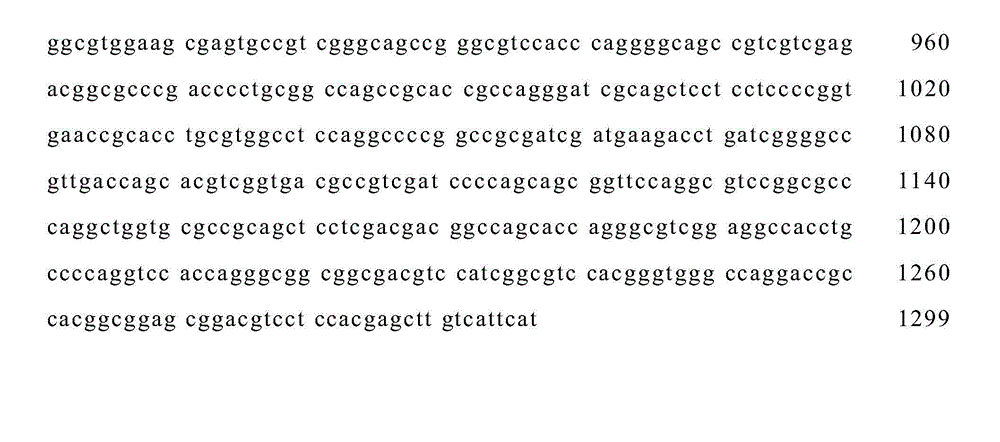Acid-resistant E.coli engineering bacteria
A technology of Escherichia coli and engineering bacteria, applied in the field of genetic engineering, can solve the problems of lack of gene manipulation tools, inability to realize the gene manipulation of Propionibacterium acidobacterium, and inability to verify the function of key enzymes, etc.
- Summary
- Abstract
- Description
- Claims
- Application Information
AI Technical Summary
Problems solved by technology
Method used
Image
Examples
Embodiment 1
[0017] Determination of embodiment 1secretion neighborhood ATPase
[0018] Collect the bacterial cells of the original strain of Propionibacterium acidogenicum and the acid-resistant mutant strain in the mid-log phase, and extract the intracellular proteins respectively. Through the comparison of proteomics technology, it is found that the content of a protein spot in the acid-resistant strain is the same as that of the original strain. Compared with the up-regulation of more than 3 times, this point was dug out and identified by MALDI-TOF / MS mass spectrometry, and the protein was determined to be the secretion neighborhood ATPase. Secretion neighborhood ATPase may be related to the acid resistance of bacteria.
Embodiment 2
[0019] The construction of embodiment 2 acid-resistant escherichia coli engineering bacteria
[0020] Primers were designed based on the amino acid sequence of the secretion neighborhood ATPase on NCBI, and the whole genome sequence of P. acidipropionici was used as a template to amplify the sec target fragment by PCR. The sequence is shown in SEQ ID NO.1. The target gene was connected to the expression vector pACYCDuet-1 through restriction sites Nco I and Hind III to obtain the recombinant expression plasmid pACYCDuet-sec. The recombinant plasmid was transformed into Escherichia coli E.coli BL21(DE3), and spread to LB solid medium containing chloramphenicol resistance. The transformants were randomly selected for colony PCR verification, and positive transformants were obtained, and the recombinant E. coli E. coli BL21(DE3)-sec was confirmed by further isolation of the plasmid for double enzyme digestion verification.
Embodiment 3
[0021] Embodiment 3 Recombinant bacteria and control bacteria acid resistance experiment
[0022] E.coli BL21(DE3)-1 (control strain, containing plasmid pACYCDuet-1) and E.coli BL21(DE3)-sec were inoculated into LB medium respectively, and the bacterial concentration was measured after overnight culture as seed solution. Take the same OD 600 The above seed solution was inoculated into LB medium, and cultivated to OD at 37°C 600 When = 6.0, IPTG with a final concentration of 1 mg / mL was added for induction, and after 2 hours of induction culture at 30°C, 1 g / L propionic acid, 2 g / L propionic acid, 2 g / L acetic acid, 4 g / L propionic acid, and 4 g / L L acetic acid and no organic acid added. After adding 1g / L propionic acid, 2g / L propionic acid, 2g / L acetic acid, and 4g / L acetic acid, the pH of the medium was 4.75, 4.35, 4.15, and 3.85, respectively. Continue to cultivate at 30°C until the stationary phase, and take the fermentation broth for gradient After dilution, take the di...
PUM
 Login to View More
Login to View More Abstract
Description
Claims
Application Information
 Login to View More
Login to View More - R&D
- Intellectual Property
- Life Sciences
- Materials
- Tech Scout
- Unparalleled Data Quality
- Higher Quality Content
- 60% Fewer Hallucinations
Browse by: Latest US Patents, China's latest patents, Technical Efficacy Thesaurus, Application Domain, Technology Topic, Popular Technical Reports.
© 2025 PatSnap. All rights reserved.Legal|Privacy policy|Modern Slavery Act Transparency Statement|Sitemap|About US| Contact US: help@patsnap.com



